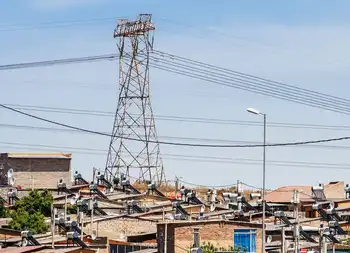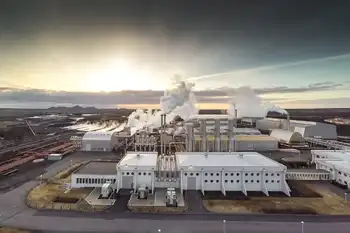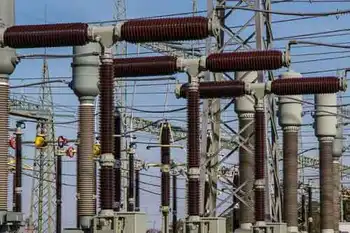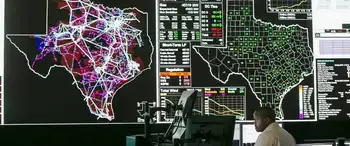New coal power plant fuels debate
The scope of project is even more striking once on site. The hulking plant will consume more than 50,000 tons of structural steel, 15,000 tons of steel rebar and 160,000 cubic yards of concrete. It is surrounded by more than a dozen tower cranes, their jibs reaching skyward.
What's more, the $4 billion project stands as a tangible symbol of the polarizing debate over climate change and the use of coal as an energy source.
Critics argue the plant, which will be the second-largest coal-fired power plant in Illinois, will pump an estimated 10 million tons of carbon dioxide and other pollutants into the atmosphere each year for decades to come at the very time many scientists are urging immediate action to curb emissions of heat-trapping gases.
On the other hand, the project is providing jobs for 2,500 people — a fact that's evident by the sea of cars and pickups sprawled across two massive parking lots on site.
The 1,600-megawatt plant will employ an additional 500 people when it's complete, and provide electricity to as many as 2.5 million people across nine states, including parts of Illinois and Missouri. There are indirect jobs created too, with restaurants, hotels and shops getting a pick-me-up — a point not lost on those who live in the area.
In nearby Marissa, a small town just southwest of the plant site, the surge of construction workers has been a boon for restaurants and retailers as they coped with the recession, said Ray Macke, township supervisor. And most rental property owners have had an easy time finding tenants.
"It's had a very positive impact, business-wise," Macke said. "We're not taking nearly the hit the other places are." Macke is sensitive to the widely differing views on global warming and the use of coal as an electricity fuel. But, most of the town's 2,000 or so residents are happy to see the project, save for some aggravation with the increase in truck traffic.
After all, Marissa's heritage is linked with the local mining industry and still hosts the Coal Fest every summer.
"This town wouldn't be here if it wasn't for coal mining," he said.
Prairie State was announced in 2001 and was supposed to be generating electricity by 2007. But the legal battle surrounding the plant's air permit wasn't resolved until late 2006 when the Environmental Appeals Board affirmed an Illinois EPA decision to approve the project.
Prairie State officials say the plant is cleaner than comparable coal power stations and includes the best available environmental controls, including massive scrubbers that will remove most sulfur dioxide from the emissions. Using coal conveyed from an adjacent mine instead of fuel hauled 1,000 miles by train from northeastern Wyoming will also cut CO2 emissions by 200,000 tons a year, CEO Peter DeQuattro said.
While burning coal releases CO2, the fuel has advantages over renewable forms of electricity. At least for now, there's a cost advantage compared with wind and solar. And a coal-fueled power plant can produce reliable electricity 24 hours a day, 365 days a year, he said.
"With all due respect to the (global warming) debate and potential for green jobs, if you look at the fundamentals, the country needs affordable base load electric power," DeQuattro said. "It's the basis for any type of significant employment base and for us as a country to enjoy the economic standards that we do."
The end of the legal and permitting battles did nothing to change feelings and perceptions about the project. Surrounding communities and elected officials mostly embraced it. Meanwhile, the project remains anathema to environmental groups, who still believe regulators should have required technology to capture CO2 emissions.
"Peabody built a plant with early 20th century technology while claiming it to be 'advanced,'" said Kathy Andria, director of the American Bottom Conservancy, one of the groups that battled developer Peabody Energy Corp. over the air permit. She noted that the EPA recently declared that CO2 poses a danger to public health, a step toward federal regulation of greenhouse gases.
The plant and adjacent mine are more than a third complete. Electrons are set to begin flowing in August 2011 when the first 800-megawatt unit is done. The second 800-megawatt unit is scheduled to be complete by June 2012.
The work site swarms with steelworkers, pipefitters and laborers. Another 170 people are at work at the adjacent mine. Virtually overnight, the project site has become one of the larger towns in rural Washington County, just smaller than Nashville, the county seat.
The plant sits on more than 600 acres of 2,400 acres owned by Prairie State Generating LLC. Over the course of a year, it will burn 6.3 million tons of coal from the adjacent mine, which reaches 230 feet underground. The black rock will be transported across County Road 12 by a system of conveyors and delivered to the plant's boilers.
While the plant won't begin producing electricity for almost two years, efforts to staff it are well under way.
"We are just getting going" on hiring, DeQuattro said. "We have an initial staff of 14 people at the plant for operations. Construction management staff is over 40."
He said they plan to add this year 75 to 100 jobs this year in operations and over 100 in the mine.
Prairie State partnered with Southwest Illinois College and Illinois Eastern Community Colleges for the mine and co-developed training programs offered by the schools to help prospective employees be able to pass tests that are part of the hiring process. The classes, which began last year, were oversubscribed, so additional times and dates were offered.
"We need to salt the work force with experienced people like we have, but for the nonexempt ranks," DeQuattro said. "We also want to try to hire local people where possible."
St. Louis-based Peabody, the world's largest private-sector coal company, today owns just a 5 percent stake in Prairie State, having sold the rest of its interest to eight public power systems, each of which not only owns a piece of the plant but also a share of the 200 million tons of coal buried 230 feet below ground (effectively a 45-square mile block of coal).
The ownership group has vocally opposed climate legislation debated by Congress. Meanwhile, Prairie State has hired consultants to study the cost to fit the plant with equipment to capture CO2 emissions, DeQuattro said.
For now, CO2 capture technology hasn't been installed on coal-fired power plants as large as Prairie State. And the economics of doing so probably don't make sense right now.
But groups such as the Clean Air Task Force, a Massachusetts-based environmental advocacy group, have become increasingly optimistic that the nation's existing coal fleet can be fitted with CO2 controls.
"(Prairie State) is the last of the line of these large coal plants," said John Thompson of Carbondale, director of the group's coal transition program. "My hope is that it will be among the first to retrofit."
Related News

South Africa's Eskom could buy less power from wind farms during lockdown
JOHANNESBURG - South African state utility Eskom has told independent wind farms that it could buy less of their power in the coming days, as electricity demand has plummeted during a lockdown aimed at curbing the spread of the coronavirus.
Eskom, which is mired in a financial crisis and has struggled to keep the lights on in the past year, said on Tuesday that power demand had dropped by more than 7,500 megawatts since the lockdown started on Friday and that it had taken offline some of its own generators.
The utility supplements its generating capacity, which is mainly derived from coal,…





